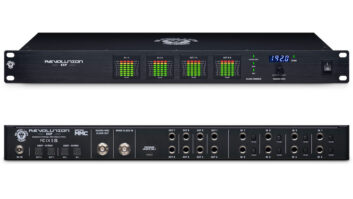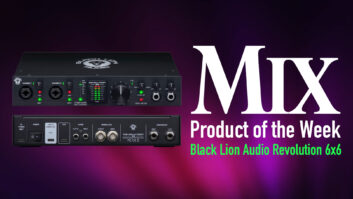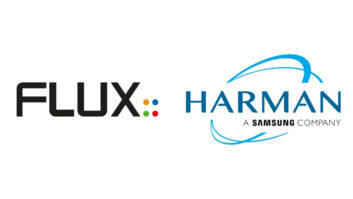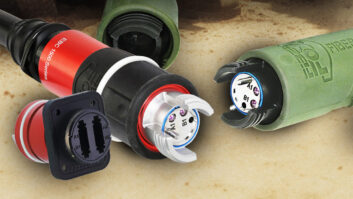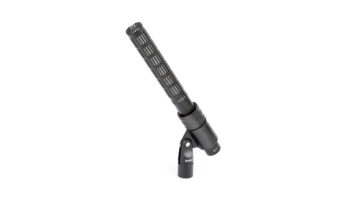Proprietary mix surfaces are still the norm at FOH positions around the world, yet seemingly every new digital mixing product on the market boasts some touch-based or GUI (Graphic User Interface) feature. Many are nearly or completely operable via a tablet or another freestanding, multi-touch CPU. As an industry, yes—we still love our buttons, knobs and faders. Yet we increasingly seem to, for example, love the freedom to move about any venue even more than any one traditional worksurface feature.
“I’m one of those people that believes there’s a place and use for many different kinds of equipment,” offers Liz May, live sound mixer, producer/engineer and production manager of Reynolds Auditorium in Winston-Salem NC—and an avid user of many different types of traditional mixing consoles as well as new rackmount mix processors controlled by consumer and/or proprietary touch devices. “I like ‘tablet mixing’ a lot, but there are many instances where I prefer a desk, too.”
May has gleaned plenty of experience with touch or tablet-centric mix systems from manufacturers including Allen & Heath, Behringer, Mackie, PreSonus and Yamaha. While she is an Allen & Heath GLD-80 digital mixing system owner/user, she likewise enjoys working with Mackie’s DL32R, PreSonus’s StudioLive AI and Yamaha’s TF-Rack, too, all controllable via tablet.
“For me, Mackie’s DL32R, PreSonus’ AI rack and Yamaha’s TF-Rack are great—super compact and highly functional,” she notes. “Among other perks, the time that you can save in setup is so valuable.”
May is in the midst of a full TF-Rack review for PSN, yet she has already come to a few conclusions, finding it “more than a bit different” from working on a standard TF Series console, she explains. “You have a different workflow, but I would prefer to mix using the TF-Rack as opposed to, say, an LS9. I find that I can get around a lot faster using an iPad with the TF-Rack—with the exception of the EQs—than I can on the desk.”
“Specifically, EQ is tougher to do on a tablet,” May offers. “Every [manufacturer] has a slightly different way of handling it, so I still find that certain types of detailed work are a challenge to do on a tablet. That said, with adjusting gain, turning compressors on and off, using sends and effects, routing to monitors and so on, I feel that I can do those things just as fast on a tablet as I can on a desk, just because you’re dealing with layers on these digital consoles as it is.”
Many mixing tasks are just simpler and easier when using a tablet-controlled digital mixer. Along with sheer measurement, size and weight-based benefits, operational and strategic conveniences abound. As May often mixes FOH as well as monitors at houses-of-worship, using a tablet-controlled rack-mount mixing system gives her the necessary freedom such gigs often require. “Sometimes they may not know what they need in their monitors,” explains May of some HOW-based performers. “I can just run up there and mix the monitors for them, or take the iPad up there when there’s a problem with someone’s in-ears. That’s instead of having to run back and forth continuously. Being able to cut the ‘umbilical cord’ to the desk is a great benefit to having a tablet-controlled mixer. That, and I can go sit in the house after a show gets going.”
Augmenting the collection of products mentioned above, other touchscreen mixing contenders are increasingly jumping into the game, including Allen & Heath, Crest Audio and QSC.
Building on the power of its Qu Series of compact digital mixers, Allen & Heath now offers its Qu-Pac Ultra Compact Digital Mixer, a Qu Series mixer packed into a rackmount digital mixing and effects unit featuring 16 mic/line channels with recallable preamps, the iLive FX engine and more, all controlled via a built-in touchscreen or the Qu-Pad app for iPad.
Meanwhile, QSC has effectively updated its entire TouchMix Series with newly unveiled Version 3.0 software for TouchMix-8 and Touch-Mix-16 and Version 1.2 for Touch-Mix-30 Pro. The new firmware is available as a free download for current users and is factory-installed in new production units. Version 3.0 for TouchMix-8 and TouchMix-16 provides 20 enhancements, many of which were features previously available exclusively on the TouchMix-30 Pro.
Finally, yet currently impending shipment, Crest Audio has announced its Tactus Digital Mixing System. Crest partnered with Waves Audio to create Tactus, a modular touch-screen mixer, processor and controller incorporating Waves’ eMotion LV1 software. Tactus is centered on a streamlined yet customizable touchscreen-controlled GUI that displays all audio routing, processing and mixing tools at hand. Designed to work with the Waves Audio’s eMotion Mixer for SoundGrid, Tactus notably allows the use of Waves plugins for live events, all running via Windows or Mac OS with one, two or three incorporated multi-touch screens.
With so many options available—and doubtlessly more to come—rackmount and tablet mixing choices will continue to make inroads into the modern live-sound setup.
